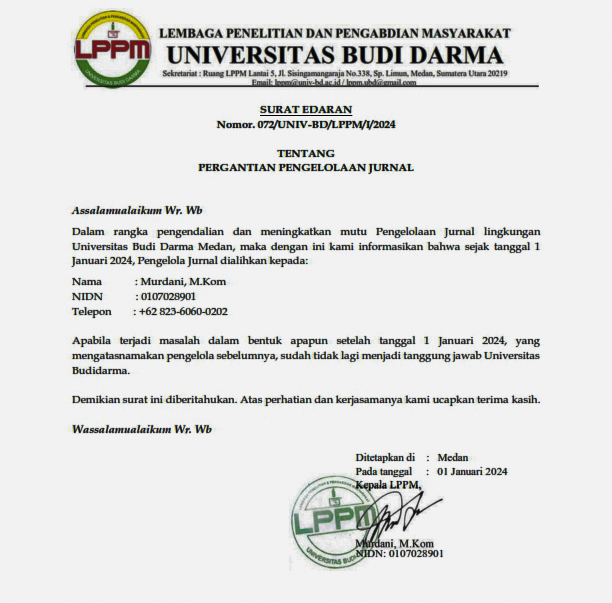Klasifikasi Gambar Gigitan Ular Menggunakan Regionprops dan Algoritma Decision Tree
DOI:
https://doi.org/10.30865/json.v1i2.1789Abstract
Indonesia has a high biodiversity of snakes. Snake species that exist throughout Indonesia, consisting of venomous and non-venomous snakes. One of the dangers that can be posed by snakes is the bite of several types of deadly snakes. Snake bite cases recorded in Indonesia are quite high with not a few fatalities. Most of the deaths caused by snakebite occur due to errors in the handling procedure for the bite wound. This problem can be overcome one of them if we know how to classify snake bite wounds, whether venomous or non-venomous. In this study, a classification system for snake bite wound image was built using Regionprops feature extraction and Decision Tree algorithm. Snake bite images are classified as either venomous or non-venomous without knowing the kind of the snake. In Regionprops several features are used to help the process of feature extraction, including the number of centroids, area, distance, and eccentricity. Evaluation of the model that was built was found that the parameters of the number of centroids and the distance between centroids had the most significant influence in helping the classification of images of snakebite wounds with an accuracy of 97.14%, precision 92.85%, recall 91.42%, and F1 score 92.06%.
References
Kusmana, C. (2015). The Biodiversity of Flora in Indonesia. Bogor Agricultural University.
Yuwono, A. (2014). The Fifth National Report Of Indonesia To The Convention On Biological Diversity. Ministry Of Environment And Forestry Of Indonesia.
BAPPENAS (1993). Biodiversity Action Plan for Indonesia. Ministry of National Development Planning/National Development Planning Agency, Jakarta, Indonesia. 141 p.
Latus, P., Panaro, F. (2018). Venomous Snakes – Snakebites. Introducing Indonesia, 5th edition, AWA. Available at : https://www.expat.or.id/medical/venomoussnakes.html
Auerbach PS, Norris RL. (2015). Disorders caused by venomous snakebites and marine animal exposures. In: Harrison’s principles of internal medicine. 18th ed. Vol. 2. New York: McGraw-Hill Professional. p. 3566-76
Gutiérrez JM, Warrell DA, Williams DJ, et al. (2013). The need for full integration of snakebite envenoming within a global strategy to combat the neglected tropical diseases: the way forward. PLoS Negl Trop Dis 7(6):e2162
International Society on Toxinology. (2014). http://knoema.com/ueecokg/global-snakebite-statistics-may-2014
Kasturiratne A, Wickremasinghe AR, de Silva N, et al. (2008). The global burden of snakebite: a literature analysis and modelling based on regional estimates of envenoming and deaths. PLoS Med. 5(11):e218.
World Health Organization (2016). https://www.who.int/snakebites/epidemiology/en/
Gupta, B., Rawat, A., Jain, A., et al. (2017). Analysis of Various Decision Tree Algorithms for Classification in Data Mining. International Journal of Computer Applications (0975 – 8887)
James, A. (2017). Snake classication from images. PeerJ Preprints 5.
Maduwage, K., O'leary, M.A., & Isbister, K.G. (2014) Diagnosis of snake envenomation using a simple phospholipase A2 assay. Scientific reports 4.
Putra, R. M., Adiwijaya & Utama, D.Q. (2018). Snake Bite Classification Using Chain Code and K Nearest Neighbour. Journal of Physics: Conference Series.
Hernawati, N.P.A.U.D, Adiwijaya, & Utama, D. Q. (2018). Image processing for snake indentification based on bite using Local Binary Pattern and Support Vector Machine method. Journal of Physics: Conference Series, 1192:012007
Husna Aydadenta, Adiwijaya, (2018), A Clustering Approach for Feature Selection in Microarray Data Classification using Random Forest, Journal of Information Processing System 14(5)
Amalya Citra Pradana1, Adiwijaya2, Annisa Aditsania3. (2018). Implementing binary particle swarm optimization and C4.5 decision tree for cancer detection based on microarray data classification. Journal of Physics Conference Series 1192:012014
Shoumy, N. J., Yaakop, S.N., Ehkan, P., Ali, M. S., & Khatun, S. (2016). Feature extraction for neural network pattern recognition for bloodstain image analysis. International Journal of Applied Engineering Research, 11(15):8583-8589.
Craw, S. (2005). Case Based Reasoning. Lecture 3 : CBR Case-Base Indexing. Available at : www.comp.rgu.ac.uk/staff/ smc/teaching/cm3016/Lecture-3-cbr-indexing.ppt
Downloads
Published
How to Cite
Issue
Section
License

This work is licensed under a Creative Commons Attribution 4.0 International License
Authors who publish with this journal agree to the following terms:
- Authors retain copyright and grant the journal right of first publication with the work simultaneously licensed under Creative Commons Attribution 4.0 International License that allows others to share the work with an acknowledgment of the work's authorship and initial publication in this journal.
- Authors are able to enter into separate, additional contractual arrangements for the non-exclusive distribution of the journal's published version of the work (e.g., post it to an institutional repository or publish it in a book), with an acknowledgment of its initial publication in this journal.
- Authors are permitted and encouraged to post their work online (e.g., in institutional repositories or on their website) prior to and during the submission process, as it can lead to productive exchanges, as well as earlier and greater citation of published work (Refer to The Effect of Open Access).





